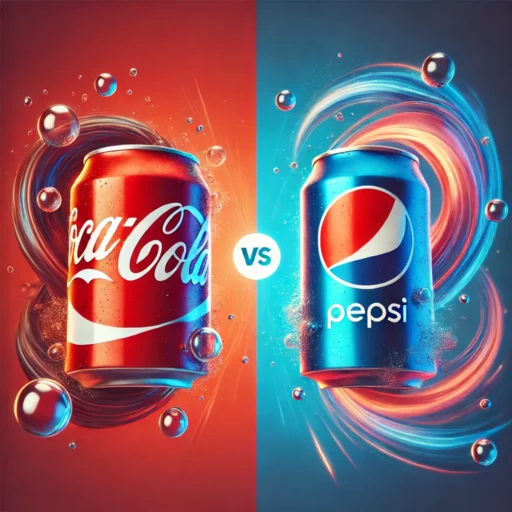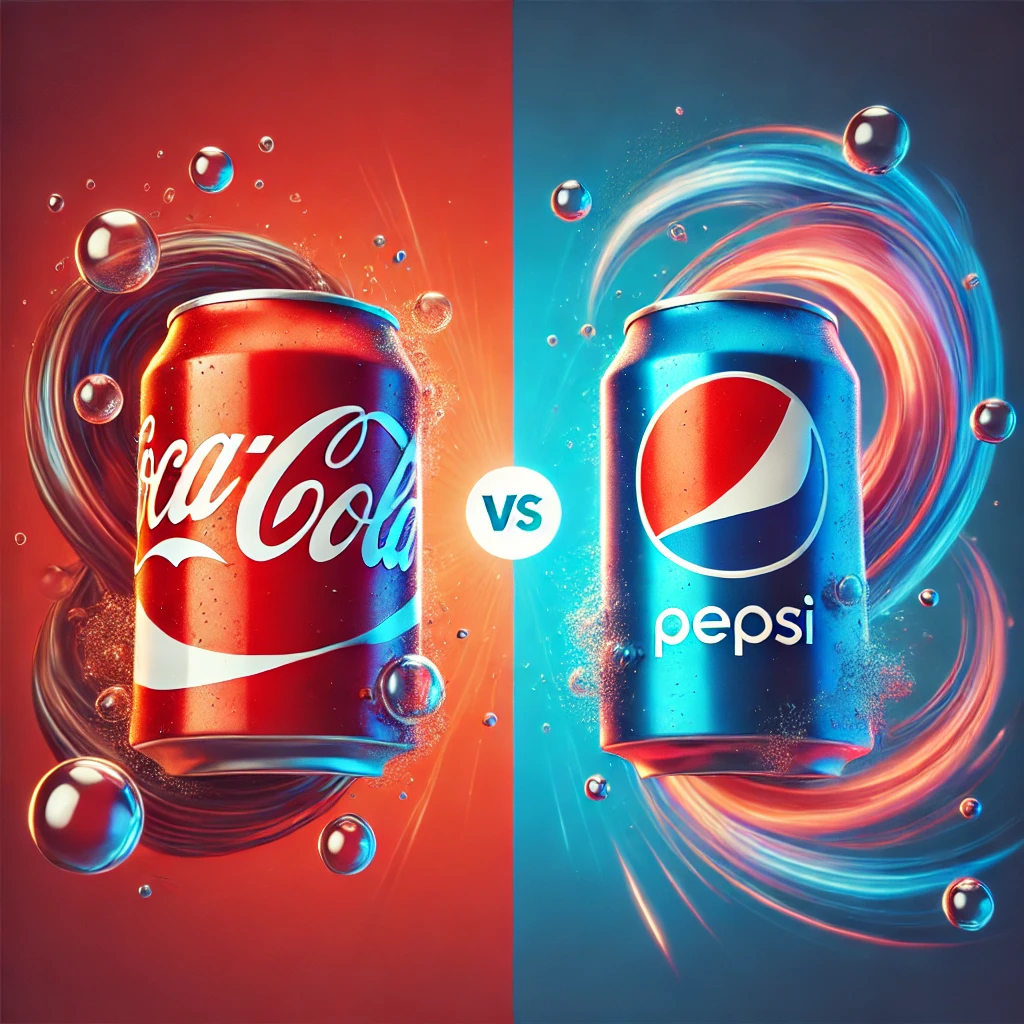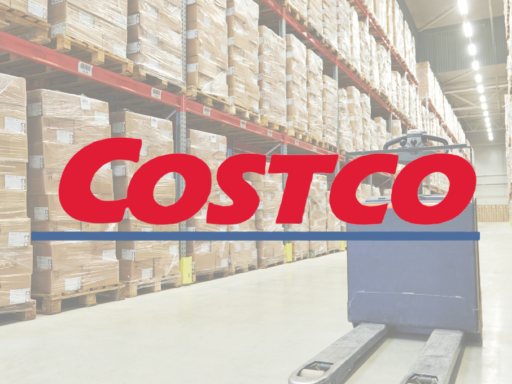Scope 3 emissions, which include all indirect emissions from a company’s value chain (upstream and downstream), represent the largest emissions category for both Coca-Cola and PepsiCo. These emissions originate from agricultural inputs, packaging, logistics, product use, and end-of-life disposal. Tackling Scope 3 emissions is essential to achieving science-aligned decarbonization goals.
Coca-Cola Sustainability
Coca-Cola has committed to reducing absolute Scope 3 greenhouse gas emissions across its value chain as part of its science-based targets aligned with a 1.5°C pathway. The company reaffirmed its goal to reduce GHG emissions by 25% across Scopes 1, 2, and 3 by 2030 (from a 2015 baseline) and to achieve net-zero emissions by 2050. Its most recent 2023 Business & Sustainability Report focuses on packaging circularity, supplier engagement, and renewable energy sourcing.
https://www.coca-colacompany.com/sustainability/esg-resources
https://www.coca-colacompany.com/sustainability/emissions/measuring-our-emissions-impact
PepsiCo Sustainability
PepsiCo’s “PepsiCo Positive” (pep+) platform is the framework guiding its sustainability transformation. The company aims to achieve net-zero emissions across its value chain by 2040, with interim goals to reduce Scope 1, 2, and 3 emissions by 40% by 2030 from a 2015 baseline. Its latest ESG Summary and Climate Action Strategy highlight advances in regenerative agriculture, renewable electricity, and decarbonized logistics.
https://www.pepsico.com/our-impact/esg-summary
https://www.pepsico.com/docs/default-source/sustainability-and-esg-topics/pepsico%27s-climate-action-strategy.pdf
Sustainability Strategy and Goals
Coca-Cola
Coca-Cola’s Scope 3 strategy emphasizes packaging redesign, circularity, and supplier engagement. However, the company recently relaxed its recycled plastic content target from 50% by 2030 to 35–40% by 2035, citing global material shortages.
- Scope 3 emissions accounted for over 90% of Coca-Cola’s total GHG footprint in 2022, equaling ~57 million metric tons.
- Over 60% of its Scope 3 emissions are linked to packaging, ingredients, and refrigeration.
- In 2022, 15% of PET plastic used globally was from recycled sources, up from 10% in 2020.
https://www.coca-colacompany.com/sustainability/packaging
https://www.ft.com/content/75d5fb6d-2bc8-4621-a955-9c70897541cd
https://www.just-drinks.com/data-insights/coca-cola-net-zero-targets
PepsiCo
PepsiCo integrates Scope 3 reductions across its entire supply chain with a stronger focus on regenerative agriculture and supplier decarbonization.
- In 2023, 94% of PepsiCo’s total GHG emissions came from Scope 3 sources.
- PepsiCo reported a 5% reduction in Scope 3 emissions in 2023 versus 2022 and a 4% decrease from its 2015 baseline.
- The company has transitioned over 1.8 million acres to regenerative agricultural practices, targeting 7 million by 2030.
- It has reduced virgin plastic from non-renewable sources by 4% year over year.
https://www.pepsico.com/our-impact/esg-topics-a-z/climate-change
https://sustainabilitymag.com/articles/pepsico-key-areas-of-sustainability-progress-in-esg-report
Key Sustainability Innovations and Technologies
Coca-Cola
- Launched “World Without Waste” to drive collection and recycling efforts globally.
- Piloting 100% plant-based bottles made from renewable materials.
- Investing in supplier emissions data tracking to develop more accurate Scope 3 assessments.
- Leveraging renewable thermal energy pilots in manufacturing operations.
https://www.coca-colacompany.com/sustainability/world-without-waste
https://www.packagingdigest.com/sustainability/coca-colas-plant-based-bottle-pilot
PepsiCo
- Built a Sustainability Action Center to track supplier emissions and collaborate on decarbonization roadmaps.
- Using digital twins and AI modeling to assess carbon impacts of logistics and packaging options.
- Partnering with the Soil and Water Outcomes Fund to incentivize regenerative practices with verified carbon outcomes.
- Increased use of electric delivery vehicles, with pilots in North America and India.
https://www.pepsico.com/our-stories/press-release/pepsico-launches-sustainability-action-center
https://www.wsj.com/articles/work-with-us-on-sustainability-and-youll-see-progress-and-prosperity-says-pepsico-cso-64e7f1b2
https://sustainabilitymag.com/articles/pepsico-electric-vehicle-strategy-in-india
Measurable Impacts
- Coca-Cola:
- Reduced absolute emissions (Scopes 1, 2, 3 combined) by ~7% from 2019 to 2022.
- 25 markets achieved 100% rPET bottles in 2022.
- However, total emissions rose slightly in 2023 due to increased production and energy use.
- PepsiCo:
- Achieved a 5% year-over-year reduction in Scope 3 in 2023.
- 100% renewable electricity now powers all direct operations in the U.S., Europe, and Mexico.
- Regenerative agriculture covered over 1.8 million acres globally in 2023.
https://www.pepsico.com/our-impact/esg-summary
https://www.pepsico.com/our-impact/esg-topics-a-z/regenerative-agriculture
Challenges and Areas for Improvement
Coca-Cola
- Faces major challenges in Scope 3 packaging emissions, particularly PET production.
- Lags in renewable thermal energy deployment.
- Reluctance to commit to a full net-zero value chain goal before 2050 positions it behind peers.
https://www.ft.com/content/75d5fb6d-2bc8-4621-a955-9c70897541cd
PepsiCo
- Progress toward a 40% Scope 3 reduction by 2030 is slower than anticipated.
- Data quality from suppliers remains inconsistent, requiring better digital reporting tools.
- High emissions intensity from third-party transportation partners persists.
Future Plans and Long-Term Goals
- Coca-Cola plans to expand reuse models (e.g., returnable glass bottles) in 20% of global volume by 2030 and is trialing refill-at-home systems in Latin America and Southeast Asia.
- PepsiCo aims to scale its regenerative agriculture program to 7 million acres and increase renewable fuels in third-party trucking fleets.
Both companies are increasing climate risk integration into supplier audits, with new tools under development to monitor upstream impacts in real time.
https://www.pepsico.com/our-impact/esg-topics-a-z/climate-change
https://www.coca-colacompany.com/sustainability/world-without-waste
Comparisons to Industry Competitors
- PepsiCo’s earlier net-zero commitment (2040 vs. Coca-Cola’s 2050) shows stronger climate ambition.
- Coca-Cola’s packaging circularity program is broader in scale, but PepsiCo shows greater depth in supplier collaboration and regenerative sourcing.
- Nestlé and Unilever report higher emissions reductions relative to PepsiCo and Coca-Cola, due in part to early adoption of climate-smart logistics.
https://www.unilever.com/planet-and-society/climate-action/
https://www.nestle.com/sustainability/net-zero-roadmap
https://www.pepsico.com/our-impact/esg-summary
https://www.coca-colacompany.com/sustainability/emissions
Our Thoughts
PepsiCo is currently outpacing Coca-Cola in Scope 3 emissions reductions due to its proactive engagement with suppliers, aggressive timelines, and systems-level integration of regenerative agriculture. Coca-Cola remains a global leader in packaging innovation and beverage circularity, but its recent relaxation of climate-related packaging goals raises concerns about long-term credibility.
Both companies must continue scaling reuse models, low-carbon logistics, and verified climate data sharing. PepsiCo offers a strong model for end-to-end Scope 3 accountability, while Coca-Cola can lead by strengthening supply chain transparency and product-level emissions disclosure. High-waste, high-emission sectors must follow suit — investing now in transparent, science-aligned Scope 3 strategies is not only feasible but necessary.






